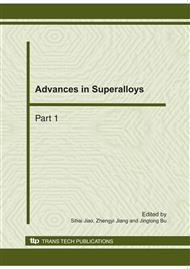p.1390
p.1398
p.1402
p.1406
p.1410
p.1415
p.1419
p.1423
p.1428
Fracture Analysis of Plates with Elliptical Hole Fabricated from Q235 Steel
Abstract:
Fracture tests of 10 plates with elliptical hole fabricated from Q235 steel with the thickness of 4mm were conducted. The effecting of sharpness of elliptical hole (a/b) on fracture mode and fracture ductility of structure steel was studied. The experiment results show that the first crack initiates at the edge of the major axis of elliptical hole and expands towards the thickness of the plates. And then the crack expands quickly vertical to loading direction until the specimen ruptures. The fracture ductility is low for the specimen with the sharp elliptical hole. Numerical simulation and analysis of Q235 steel plates with elliptical hole were implemented based on an elliptical yield model and an elliptical fracture model. The simulated stress field shows that the stress concentration severely at the edge of the major axis of elliptical hole. The accuracy of the proposed elliptical fracture model is proved for predicting the fracture of Q235 thin steel plates with elliptical hole.
Info:
Periodical:
Pages:
1410-1414
Citation:
Online since:
October 2010
Authors:
Price:
Сopyright:
© 2011 Trans Tech Publications Ltd. All Rights Reserved
Share:
Citation:


